Free Shipping & Returns on Orders $75+
The Halfdayer
Your on-mountain guide, curated by Halfdays

Halfdays Guide to National Parks
Part 1
I was lucky to grow up frequenting national parks on road trips with my family. Each summer, we’d jam-pack the car full of camping gear and hit the road to tent-camp at our favorite spots. With the right equipment and a plan in place, it was an affordable, memorable, and grounding experience to share with my family and friends, and traveling to these beautiful places became tradition.
The history of our national parks in the United States dates back to 1872, when President Grant approved legislation of a bill granting 2.2 million acres of land in Wyoming as public parks, thus protecting these sacred places for the enjoyment and travel for all. National park advocacy is near and dear to our hearts at Halfdays, where we we envision a more welcoming and accessible outdoors for all.
Whether you’ve been camping since you were little like myself, or if you’re more of a glamping and hotel stay kind of outdoor adventurist – roaming the National Parks is an experience that everyone should have. I’ve compiled a list of my all-time favorites as Part 1 in this series, and provided my tried-and-true knowledge for the best ways to view, hike, and appreciate these treasured regions.
Yosemite National Park, California
It wouldn’t be right so speak on Yosemite without mentioning John Muir, an environmentalist from the nineteenth century who we can honorably credit with founding the Sierra Club (an organization dedicating to protecting the environment) and spearheading the movement for protecting National Parks in government legislature. Muir roamed Yosemite, finding immense solace in its grandeur, and mapped its peaks and valleys. The John Muir Trail is one of the most beautiful and popular thru-hiking trails in the world.
As one of the most traveled-to National Parks, Yosemite can get a bad rap for crowds of tourists during the busy seasons. But here’s my best secret to seeing the views from the valley floor and visiting the most popular lookouts and hiking trails without the crowds: wake up early for sunrise! You’ll beat most of the other travelers, and witness a stunning sunrise over the valley. Glacier Point is a great sunrise spot to bring a coffee and blanket. At the risk of sounding dramatic, the views will literally bring a tear to your eye.
To avoid road closures and snow, the best times to visit Yosemite are from June to September. If you’re looking for a place to stay not far from the valley, check out the Wawona Hotel. A charming, Victorian-era white lodge that sits nestled among redwoods and pines, you’ll enjoy an accommodating stay with a retro pool, nine-hole golf course, and close access to hiking trails, the Pioneer History Center, and the Mariposa Grove. If you visit on a rainy year, the Merced River will be high and flowing for river floats on innertubes.

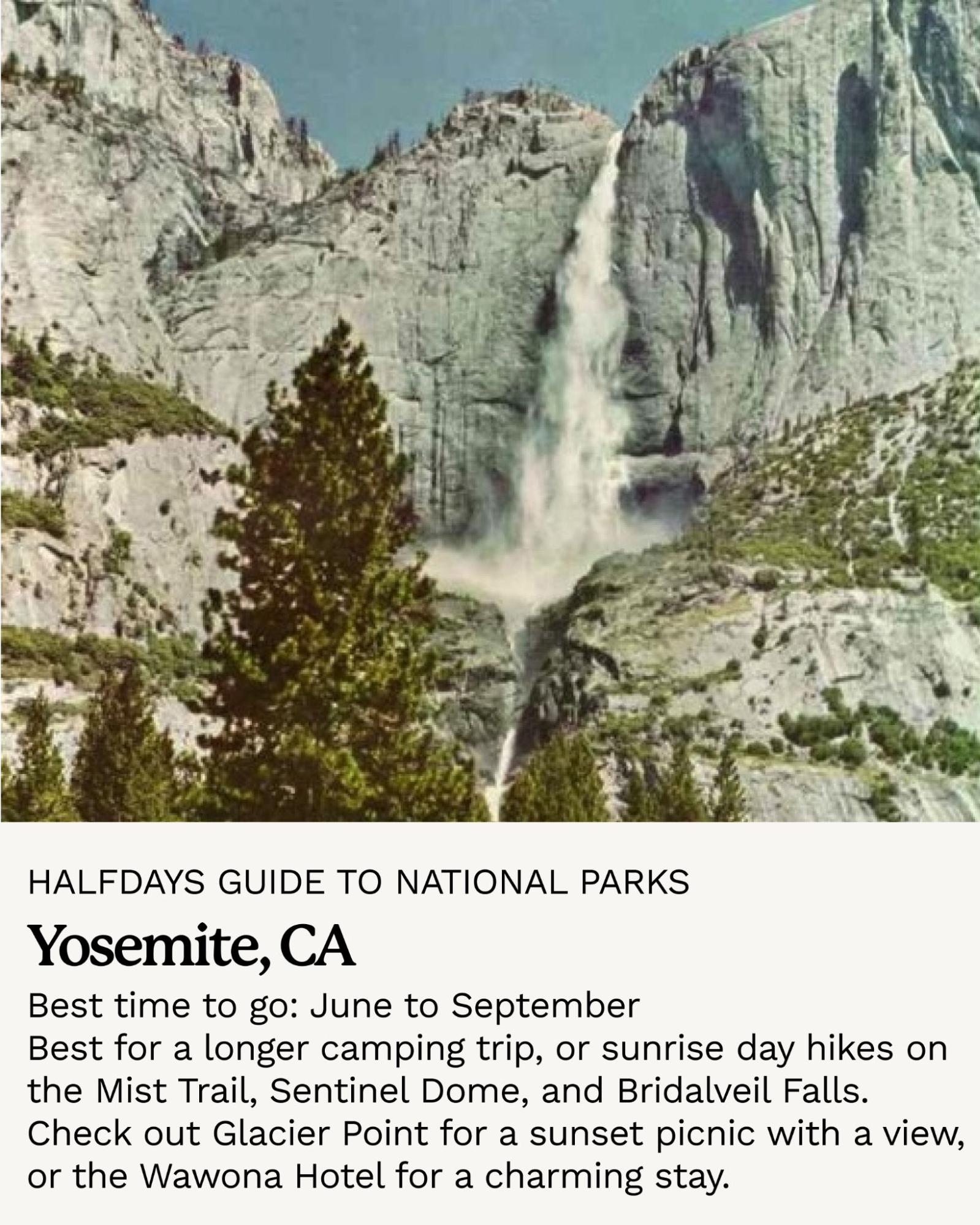
Starting off strong with my favorite place in the world: Yosemite National Park. Known for its sweeping valley of granite cliffs, waterfalls, and mountains carved out of glaciers from thousands of years ago, to wander Yosemite is to witness the grandeur of Mother Nature itself, the scars of the elements painted amongst valleys, mountains, and wildlife.
If you’re more of the camping type like myself, you’ll want to hop on camping reservations early, as they get picked up quick. My favorite campgrounds are Wawona and Yosemite Creek.
For novice hiking with the family, check out the Mist Trail that climbs a portion of the JMT (John Muir Trail), and witness the majesty of the Vernal Falls at a 7 mile there-and-back hike. Sentinel Dome is a tradition of my family to hike, with the summit peaking out at a granite-topped lookout overlooking the entire valley, with great views of El Capitan and Half Dome. At just 2.2 miles, this is a great hike for all-levels, and make sure to bring water and a snack to picnic at the top.
If you’re looking for a more challenging feat, Cloud’s Rest is a hike with the highest elevation of the entire park, with the top portion only a few feet wide with sheer cliffs on both sides. Prepare for a 20 mile hike from the Valley Floor that ascends just under 6,000 feet. This is a journey for more experienced hikers, and make sure you pack in plenty of water and proper hiking attire.
Yellowstone National Park, Wyoming
Yellowstone, the very first National Park in the United States spanning over 2.2 million acres in Wyoming, which inspired the hit Paramount show that captured America’s hearts. If you’re a Yellowstone fan, it’s only right you visit “God’s country” that is integral to the American West.
Yellowstone spans an enormous, dormant underground volcano, and features unique geological and hydrothermal areas. It contains half of the world’s natural geysers. Yellowstone is the best national park choice for seeing wildlife up-close in their natural habitats, like bison, elk, bears, and wolves. Driving through the park is the best way to do it, as long as you ensure a proper distance from these species and remain inside your vehicle.
The best time to visit Yellowstone is April, September, or October. You’ll bypass the large crowds during peak summertime, and still catch good weather for hiking and exploring.
Check out Bridge Bay campgrounds for lots of room to camp out underneath the stars, just make sure to reserve your site well in advance. Yellowstone is home to numerous historic lodges to book a room at, including the Roosevelt Lodge, Canyon Lodge and Cabins, and the rustic Old Faithful Inn.
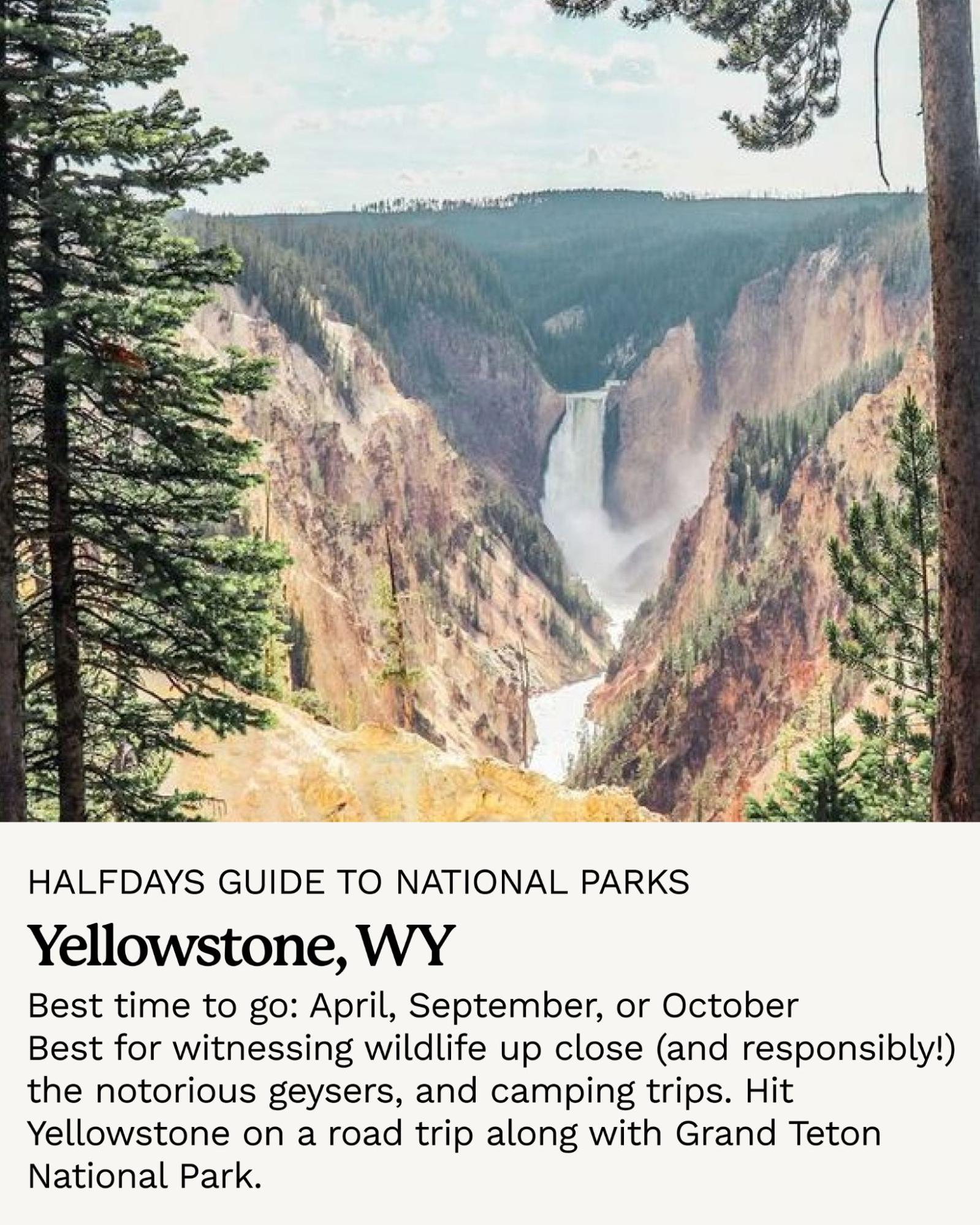
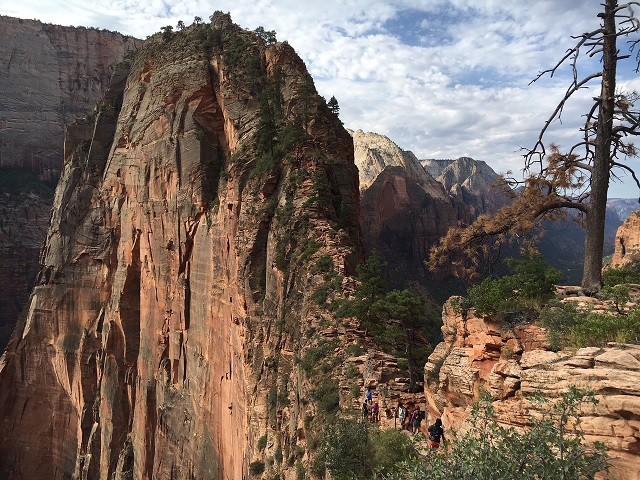
Zion National Park, Utah
Zion is one of the best choices for its breadth of hiking day trips. As Utah’s very first National Park, Zion has a rich history of pioneer adventure and the original home of many native peoples. Lined with sandstone cliffs and rock formations in pink, orange, and creams, the hiking is beautiful and holds adventure in its many slot canyons.
There are not many accommodation options close to Zion Natoinal Park, so I’d recommend opting for the camping option here at their Watchmen Campgrounds, and the Lava Point Campgrounds.
Zion’s most notorious hike is Angel’s Landing, which you can find featured in our 10 Most Beautiful U.S. Hikes. As a 5.4 mile round trip, the difficult level is moderate however the last portion to the summit requires hikers to climb a sheer cliffside only a few feet wide. There are cables there to support you as you ascend, but make sure to ditch any fear-of-heights companions. The summit overlooks a stunning view of the park with red canyons and cliffs, vibrant blue skies, and the green valley below.
For a more family-friendly hike, I’d recommend the Narrows, located at the very center of the park. The Narrows is a hike through the most narrow portion of Zion Canyon, where hikers follow the Virgin River (yes, you’ll be hiking in the water, so wear appropriate footwear like Teevas!) with sheer cliffs on both sides up to a thousand feet.
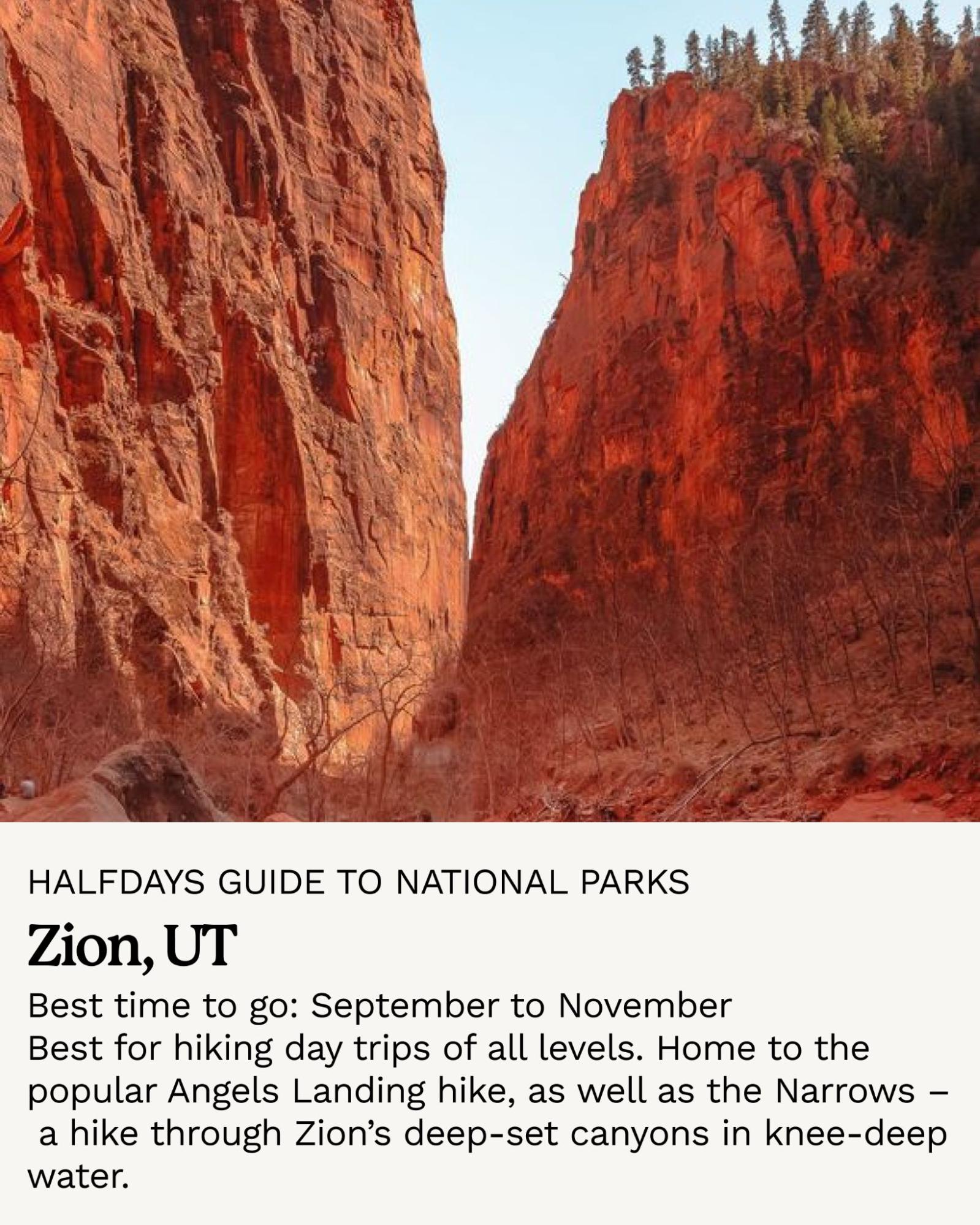
Arches National Park, Utah
Arches National Park is one of my personal favorites for its proximity to the beautiful town of Moab, Utah. Moab is an adventure epicenter of the American West, deemed for its scenic beauty out in the red desert of eastern Utah. Venture on a white water rapid rafting trip out of Moab along the Green River, rent dirtbikes and ATVs to roam the red rocks, or find a nearby canyon to climb or repel. The options are endless out in this part of Utah, and Moab is the rustic and scenic center for Southwestern restaurants, plentiful options for accommodations, and access to hundreds of miles of open camping grounds to choose from.
Arches National Park is located just north of Moab and contains over 2,000 natural rock arches. Forming gates and eyes into the desert, these arches were formed over millions of years of water and wind erosion. Arches is the ideal national park for short, easy day hikes of only a few miles each, (Delicate Arch hike is the best option!) and driving through the park at sunset, running a favorite playlist and hanging out the window with your adventure companions. Try bringing a picnic and find a secluded spot on a rocky outcrop.
Come back for Part 2 of our Halfdays Guide to National Parks, and happy hiking season!

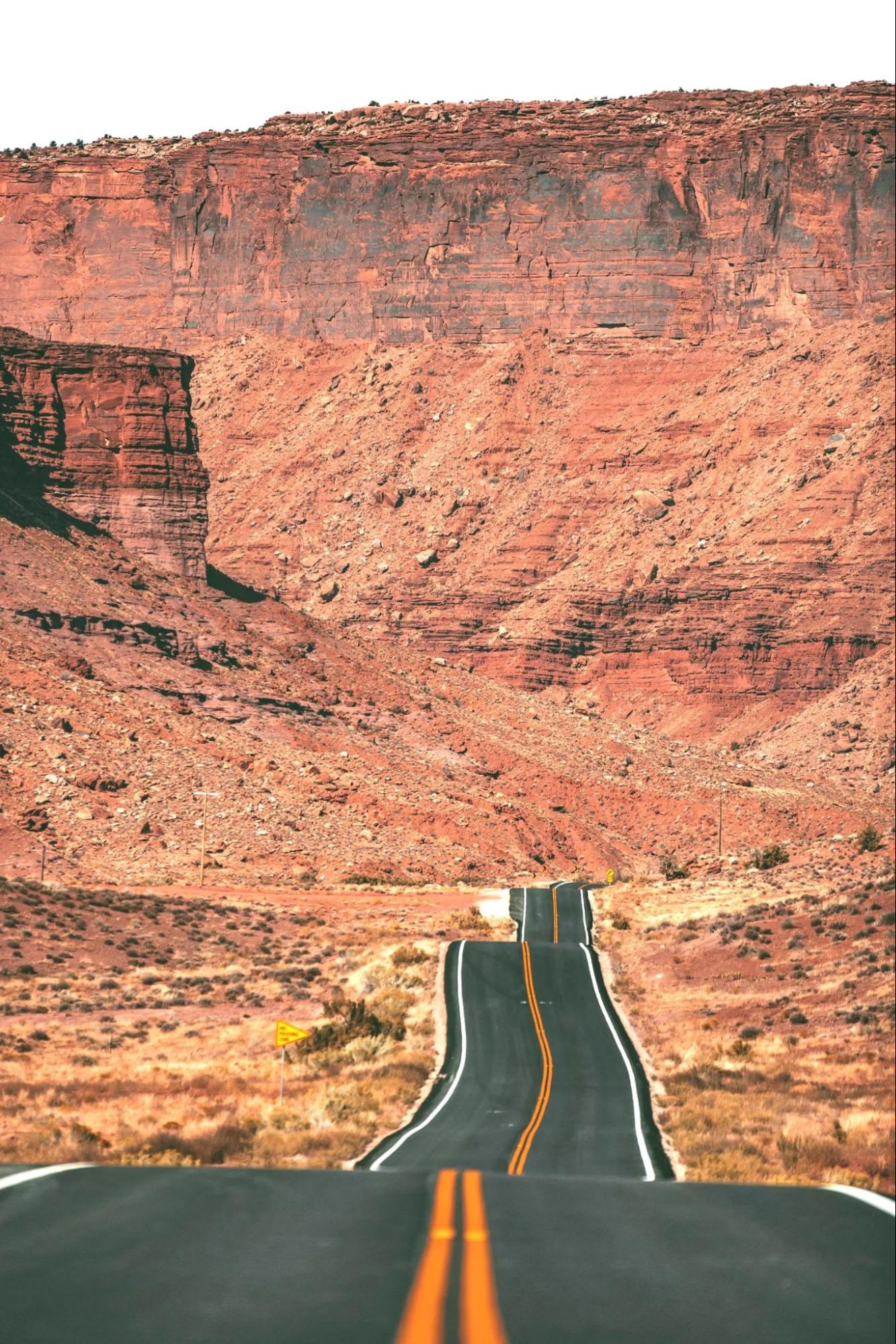
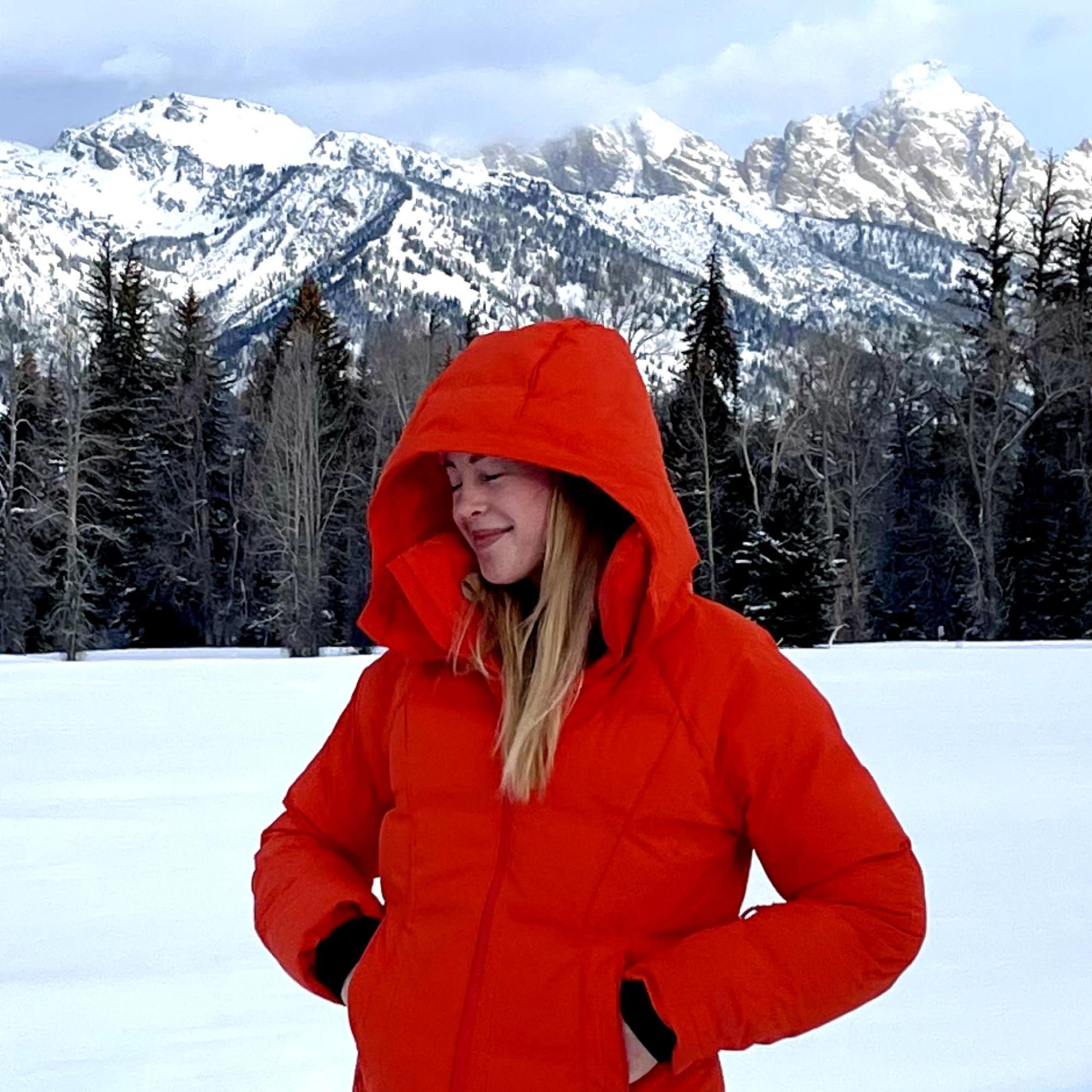
Andie Jo Smith
Andie is the Content Manager at Halfdays. With a background in writing and photography, she bounces between Austin, Texas, California, and Colorado, creating and connecting with outdoor communities across the West.
@andiejosmithThe Halfdays Guide to:
© Copyright Halfdays Apparel Corp 2024
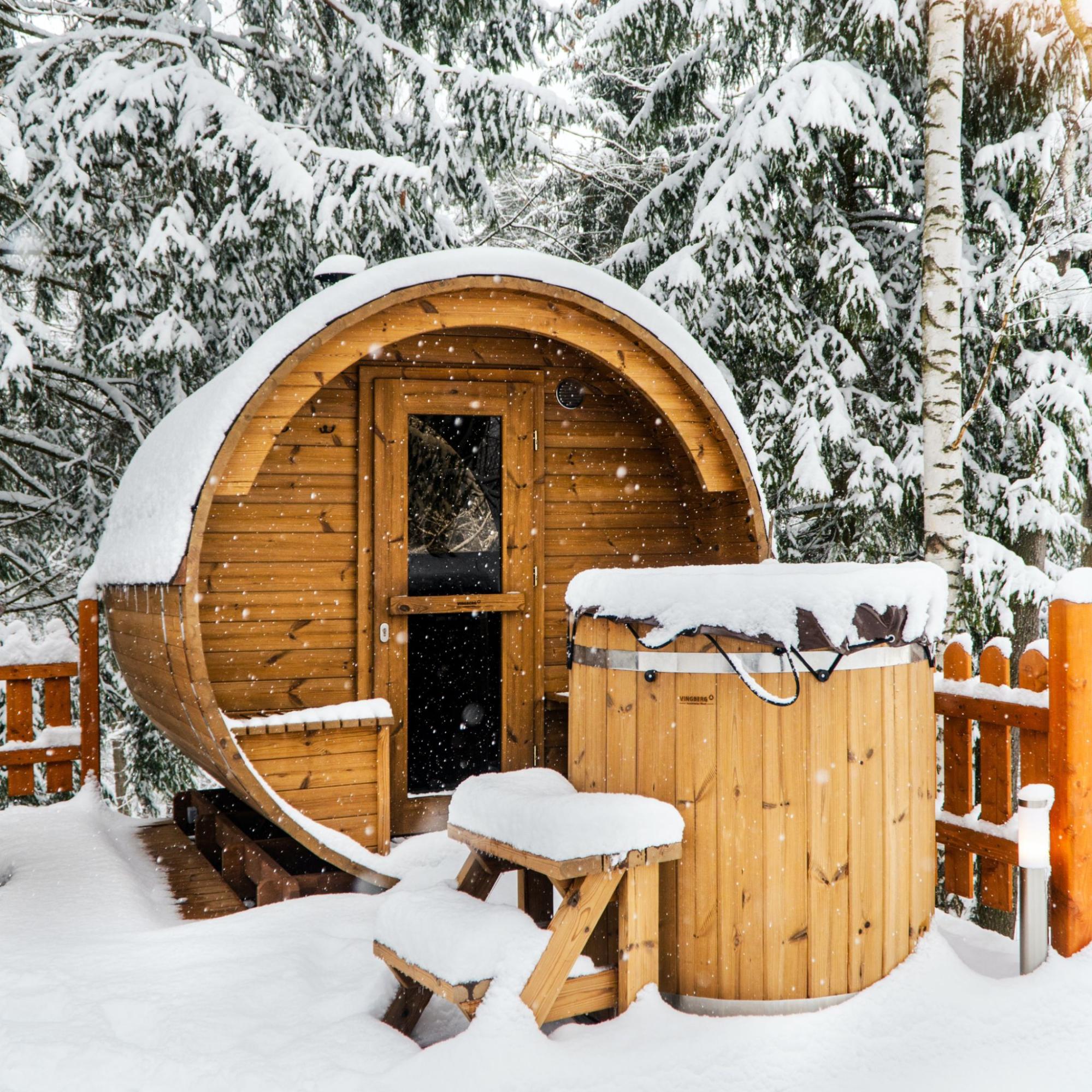



.svg)